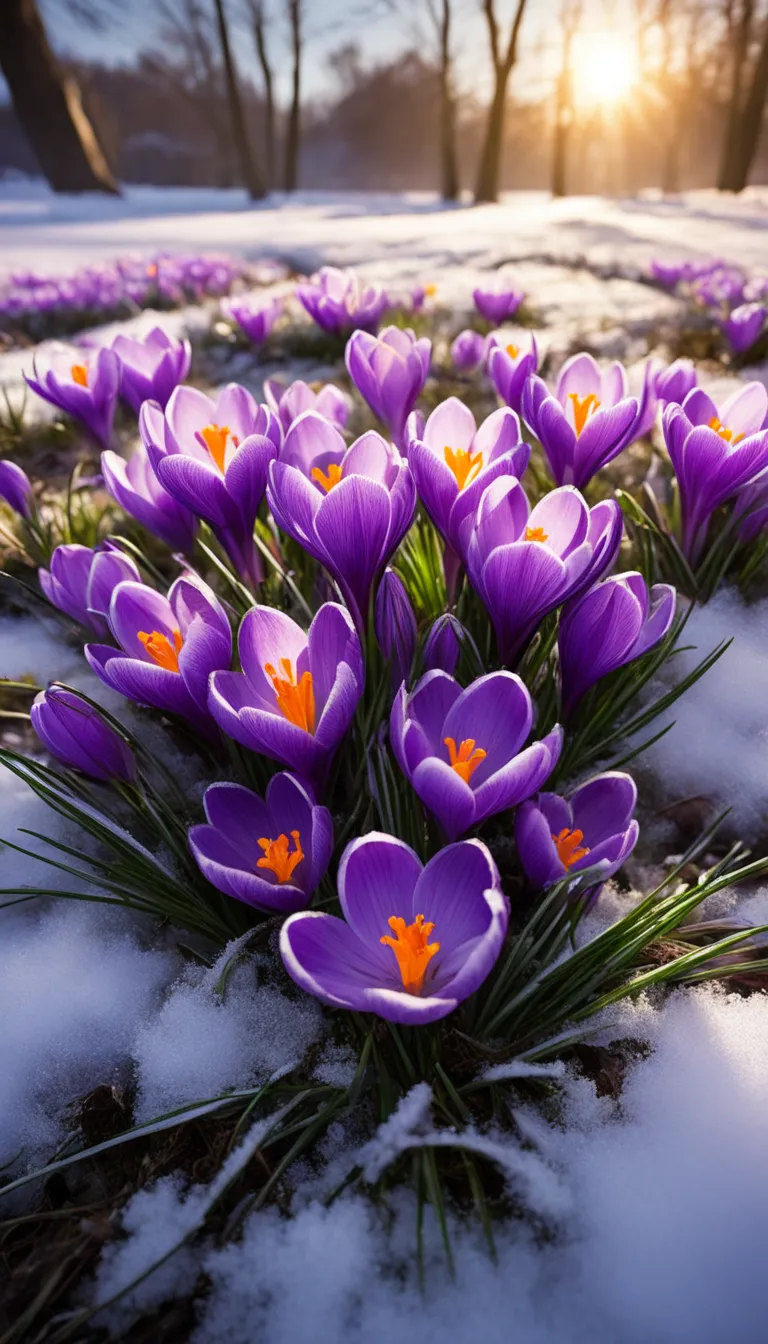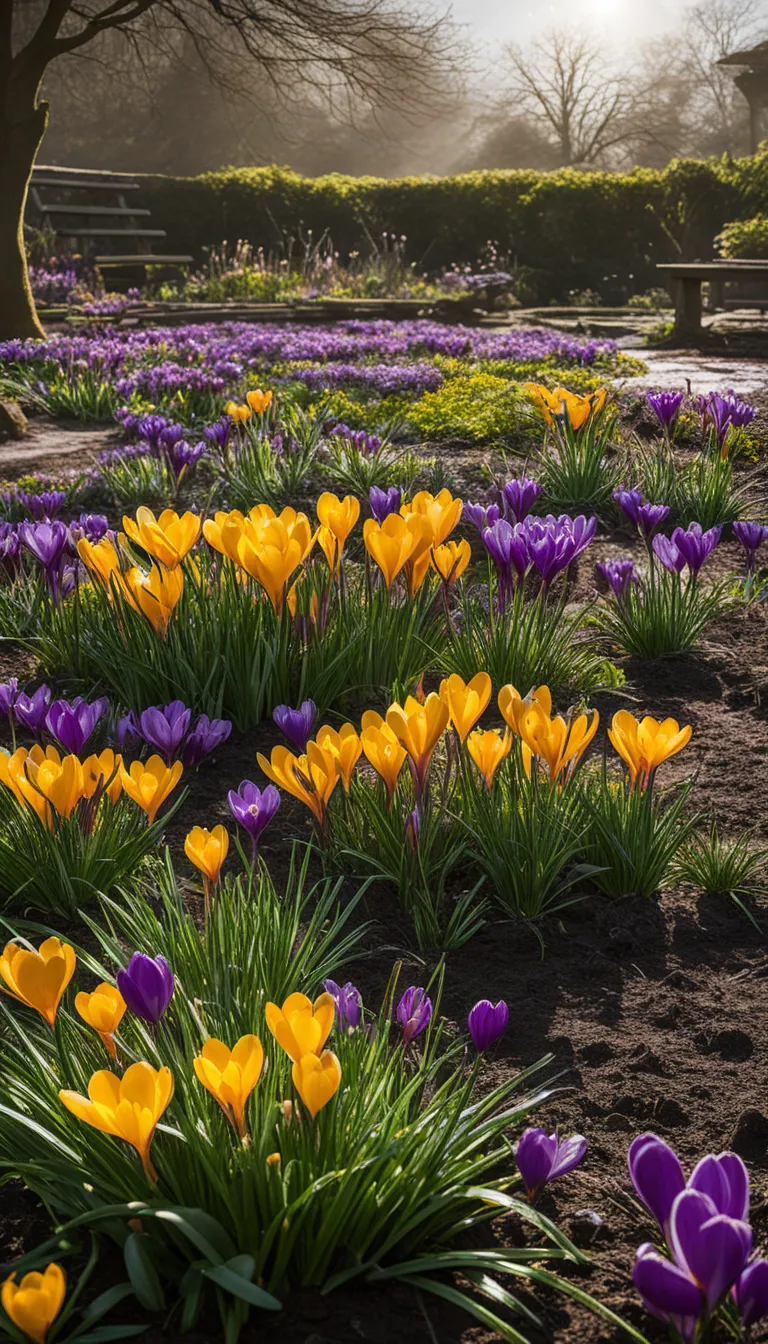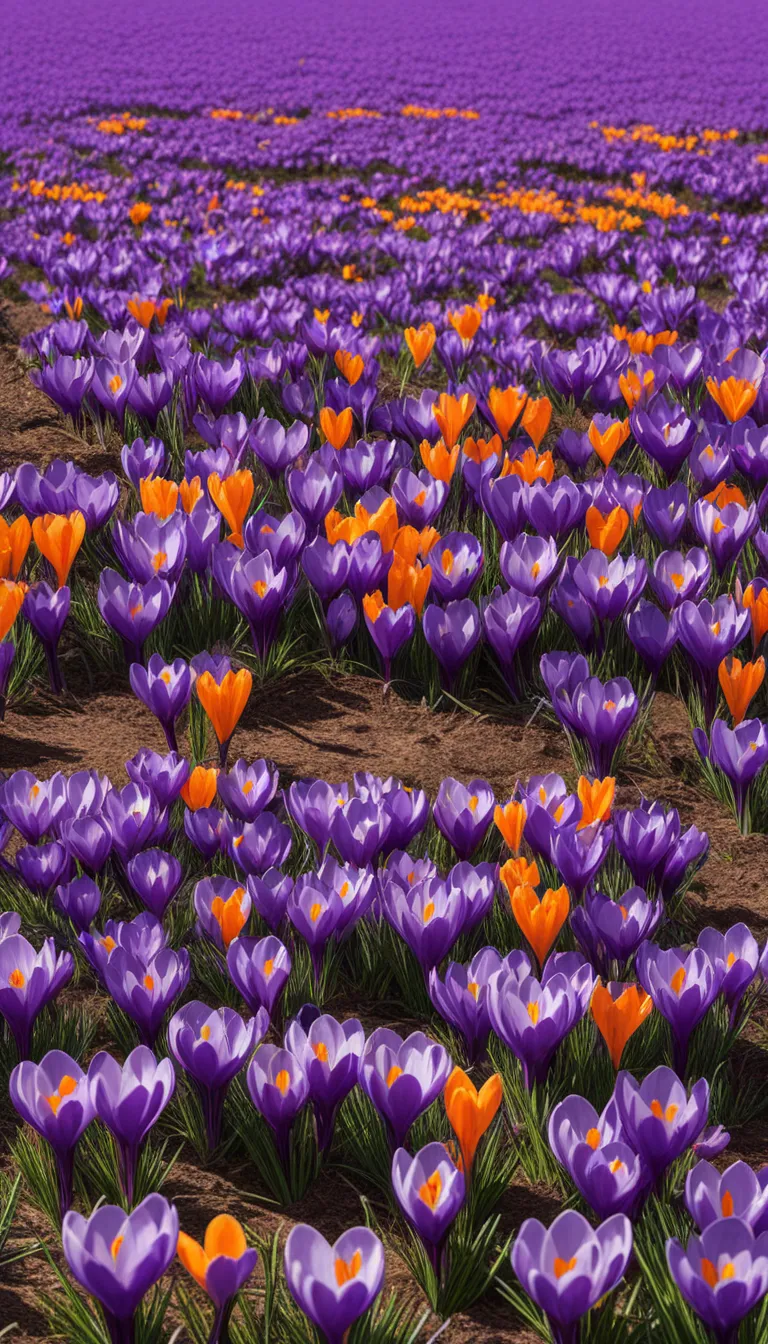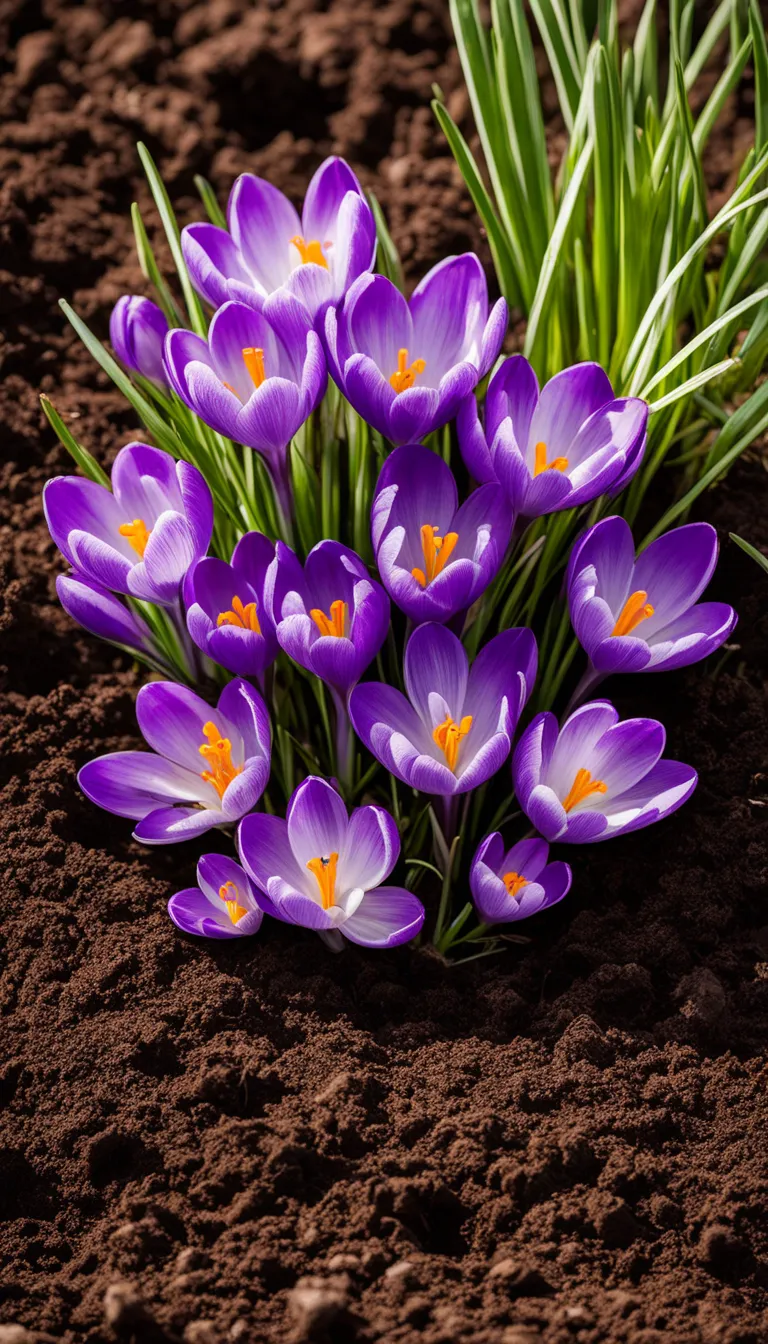Discover the vibrant world of crocuses, the early spring bloomers that bring color and life to awakening gardens. As the snow melts and the days grow longer, these cheerful flowers push through the thawing earth, surprising us with their explosion of hues. Isn’t it amazing how nature signals the end of winter with such a brilliant display?
Have you ever wondered how these tiny powerhouses know it’s time to make their grand entrance? Crocuses are not just a feast for the eyes; they’re also incredibly resilient, often braving the unpredictable weather of early spring. They don’t just signify change; they embody the essence of renewal and hope.
Picture this: a garden dotted with purples, yellows, and whites, a clear sign that warmer days are just around the corner. Crocuses are more than just flowers; they are the heralds of spring, the very soul of the season. So, why not bring a bit of this magic into your own garden? With just a little care, you can create a tapestry of color that will be the envy of the neighborhood!

What is Crocus?
Discover the vibrant world of crocuses, the early spring bloomers that bring color and life to awakening gardens.
The crocus is a small, perennial flowering plant that belongs to the Iridaceae family. Known for its striking colors and delicate blossoms, the crocus is often one of the first signs of spring, pushing through the last of winter’s snow to herald the coming warmth. Native to a wide range of habitats, including woodlands, scrublands, and meadows across Europe, North Africa, and Asia, crocuses have captivated humans for centuries.
Beyond their beauty, some crocus species have significant economical importance. For instance, the Crocus sativus is the source of the precious spice saffron. This particular variety blooms in the fall and is cultivated primarily in Iran, Greece, and India. But what truly makes crocuses remarkable is their resilience and ability to explode onto the scene just as the world starts to shake off the winter chill.
Are you wondering how such a delicate flower can be so surprisingly tough? It’s all in their corms—a type of bulb that stores all the nutrients the plant needs to survive and bloom year after year. This storage system allows the crocus to endure the cold and burst forth with vibrant life as soon as conditions permit.
Here’s a quick look at the types of crocus you might encounter:
- Crocus vernus: Known as the Spring Crocus, this species comes in purple, white, and yellow varieties.
- Crocus chrysanthus: Also called the Snow Crocus, it’s smaller than the vernus and often blooms earlier.
- Crocus sativus: The Saffron Crocus, treasured for producing saffron, blooms in autumn.

How to Care for Crocus?
When it comes to caring for crocus, the secret to their vibrant display lies in the simplicity of their needs. These charming spring heralds are not only a feast for the eyes but also surprisingly low maintenance. Let’s dive into the essentials of crocus care, so you can ensure these colorful blooms make a grand entrance in your garden year after year.
Sunlight: Crocuses are sun-seekers at heart. They thrive best when bathed in full to partial sunlight. Plant them in a spot where they can bask in the morning rays, as this will stimulate their growth and enhance the brilliance of their colors.
Watering: While they enjoy the sun, crocuses do not require much water. Their watering needs are modest, and they prefer well-drained soil. Overwatering can be detrimental, leading to bulb rot. Water them sparingly, and only if the soil feels dry to the touch.
Soil Requirements: Speaking of soil, the ideal type for crocus cultivation is one that is light and sandy. This ensures proper drainage and prevents water from pooling around the bulbs. If your garden soil is heavy or clay-like, consider amending it with sand or planting the crocuses in raised beds or containers.
- Planting Depth and Spacing: Plant crocus bulbs about 3 to 4 inches deep and 2 to 3 inches apart. This spacing allows for adequate room for the bulbs to multiply and the flowers to bloom without overcrowding.
- Fertilization: Crocuses are not heavy feeders, but a sprinkle of bulb fertilizer in the autumn can encourage better blooms in the spring.
- Post-Bloom Care: After blooming, allow the foliage to die back naturally. This process enables the plant to store energy for the next season’s blooms. Resist the urge to cut back the leaves until they’ve yellowed and withered.
With these simple steps, your crocuses will not only survive but thrive, painting your garden with splashes of color that signal the arrival of spring. Remember, a little care goes a long way in the world of crocuses, and the payoff is a spectacular early-season display that will be the envy of the neighborhood.

What are the Crocus Varieties?
When you think of crocuses, you might envision a single type of flower, but did you know there’s a whole spectrum of variety in this genus? Each type of crocus has its own unique charm, capable of captivating the garden enthusiast. Let’s take a stroll through the colorful world of crocus varieties.
Crocus sativus, commonly known as the saffron crocus, is famed not just for its beauty but also for producing the valuable spice saffron. It’s a fall bloomer, with purple petals and a distinctive red stigma. On the other hand, Crocus vernus is the harbinger of spring, with its large, cup-shaped flowers and range of colors from purple and yellow to striped varieties.
But the diversity doesn’t end there. We have Crocus chrysanthus, also known as snow crocus or golden crocus, which delights with its bright yellow blooms that often appear while snow is still on the ground. Then there’s Crocus tommasinianus, the woodland crocus, which is beloved for its ability to naturalize and spread through gardens, creating a whimsical carpet of color.
- Crocus sativus – The saffron crocus, prized for its spice.
- Crocus vernus – The spring crocus, known for its large flowers and varied hues.
- Crocus chrysanthus – The snow crocus, with vibrant yellow petals.
- Crocus tommasinianus – The woodland crocus, perfect for naturalizing in gardens.
Whether you’re a seasoned gardener or a budding green thumb, the crocus family has a variety to inspire. Each species brings its own explosion of color, setting the stage for a dramatic spring awakening. So why not add some crocus variety to your garden and watch the surprise unfold as winter fades away?





